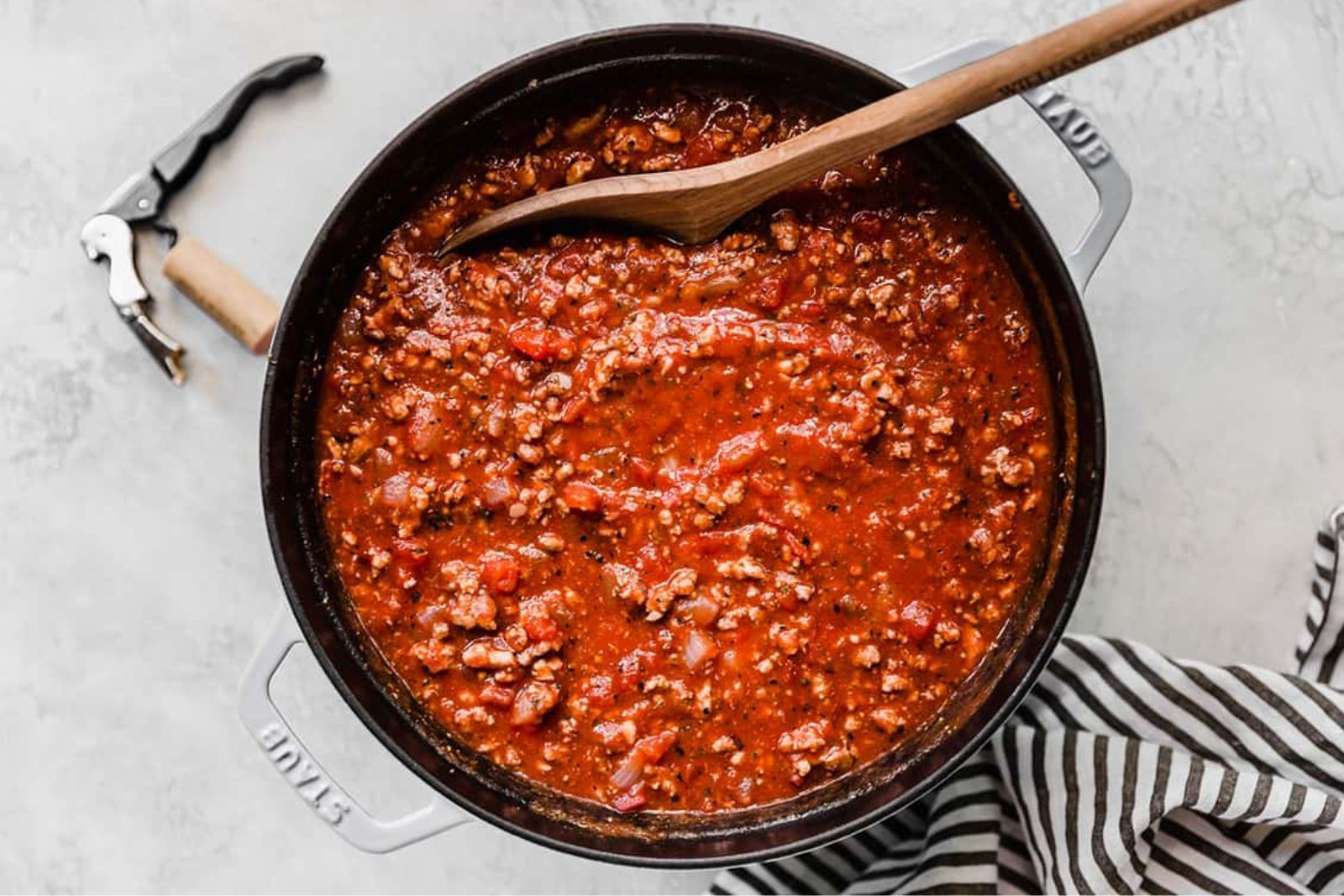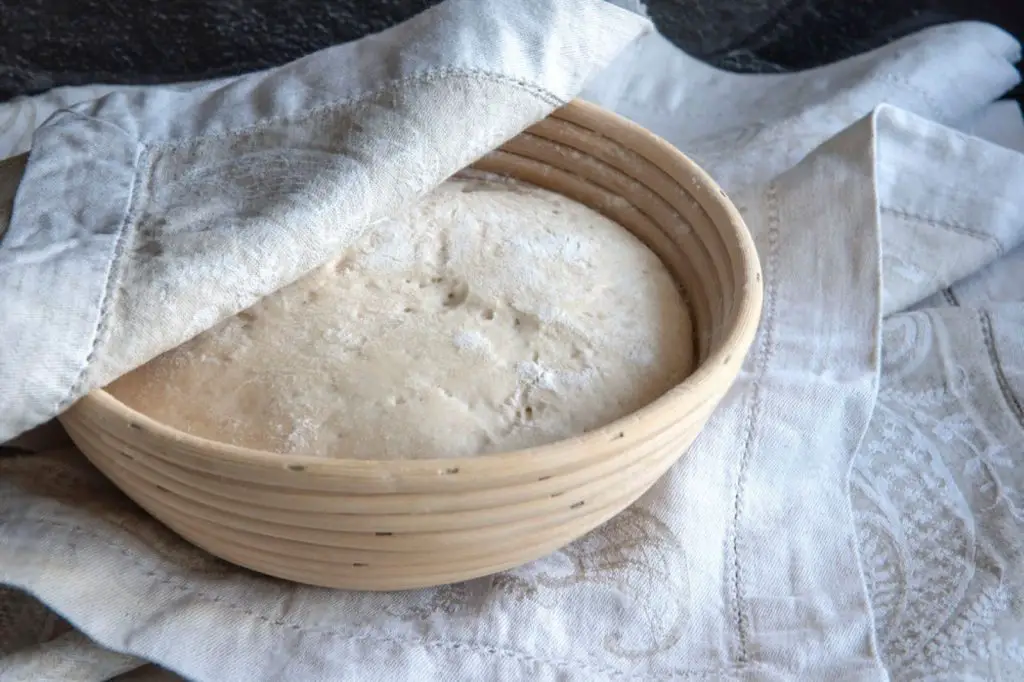
Meat sauce is a delicious and versatile ingredient that can be used in various dishes such as spaghetti, lasagna, and chili. Making a large batch of meat sauce and freezing it for future use is a convenient way to save time and ensure you always have a flavorful sauce on hand. By following a few simple steps, you can freeze meat sauce properly, preserving its taste and texture. This article presents a comprehensive guide on how to freeze meat sauce effectively, allowing you to enjoy it whenever you need a quick and tasty meal.
Here’s a guide on how to freeze meat sauce:
Step 1: Prepare the meat sauce
To begin freezing meat sauce, you’ll first need to prepare a batch of your preferred meat sauce recipe. The type of meat you use is up to you, whether it’s ground beef, pork, turkey, or a combination of meats. Cook the sauce thoroughly, ensuring that the meat is fully cooked and the flavors have melded together. This step is crucial for food safety and to enhance the taste of the sauce.
While preparing the sauce, you can season it with your preferred herbs, spices, and aromatics to add depth of flavor. This allows you to customize the sauce according to your taste preferences and the intended use of the sauce in future dishes.
After cooking the meat sauce, it’s important to let it cool completely before freezing. Rapidly cooling the sauce helps to maintain its quality and prevents the growth of bacteria during the freezing process. It’s recommended to transfer the sauce to a shallow container or a large pot to speed up the cooling process. You can place the container in an ice bath or let it sit at room temperature until it reaches a safe temperature for freezing.
Step 2: Portion the sauce
Once you have prepared and cooled the meat sauce, the next step is to divide it into individual portions that align with your future meal needs. Portioning the sauce before freezing has several benefits, including convenience and minimizing food waste.
Consider the typical serving size or the amount of sauce you usually use for a single meal. By portioning the sauce accordingly, you can freeze it in convenient portions, making it easier to defrost and use only what you need without thawing the entire batch. This allows for greater flexibility when planning meals and reduces the risk of leftovers going to waste.
Dividing the sauce into smaller portions also facilitates faster and more even freezing. Smaller portions freeze more quickly, which helps to maintain the quality and texture of the sauce. It also enables you to thaw and use smaller amounts of sauce when you want to add it to recipes that require smaller quantities.
You can use a ladle or measuring cup to portion the sauce into individual containers or freezer bags. It’s helpful to leave some headspace in the containers to accommodate expansion during freezing. Alternatively, you can freeze the sauce in an ice cube tray for even smaller portions that can be easily measured and used as needed.
Should I freeze the meat sauce in single-serving portions or in larger batches?
It depends on your needs and preferences. Freezing the meat sauce in single-serving portions allows for easier portion control and defrosting only the amount you need. However, freezing in larger batches can be convenient if you often use larger quantities of sauce for recipes or family meals.
Step 3: Choose freezer-safe containers
When it comes to freezing meat sauce, selecting the right containers is crucial to maintaining the quality and safety of the sauce. Freezer-safe containers should be made of durable, airtight materials that can withstand the low temperatures of the freezer without cracking, breaking, or allowing air to enter.
There are a few options for freezer-safe containers that you can consider:
- Freezer-safe glass containers: Glass containers are an excellent choice for freezing meat sauce. They are sturdy, non-reactive, and do not absorb odors or flavors. Look for containers specifically labeled as freezer-safe or those that are designed for both freezing and reheating. Ensure that the lids fit tightly and create a strong seal to prevent freezer burn.
- Plastic containers: Choose containers made from high-quality plastic that is specifically labeled as freezer-safe. Look for containers that are durable, BPA-free, and have airtight lids. These containers are lightweight, stackable, and convenient for storing and retrieving frozen meat sauce.
- Heavy-duty freezer bags: If you prefer a more space-efficient option, heavy-duty freezer bags can be a great choice. Opt for bags made with thick, puncture-resistant material designed for freezing. Ensure that they have a strong seal to prevent leaks and to keep the sauce protected from freezer burn. Remember to remove excess air from the bags before sealing to minimize the risk of ice crystals forming.
Regardless of the type of container you choose, it’s important to ensure they are airtight. A tight seal prevents air from entering the containers, which can lead to freezer burn and deterioration of the meat sauce’s quality. It also helps to retain the flavors and prevent any cross-contamination with other foods in the freezer.
Can I freeze meat sauce in glass jars?
While it is possible to freeze meat sauce in glass jars, it’s important to use freezer-safe glass jars that can withstand freezing temperatures and leave enough headspace for expansion. Additionally, it’s advisable to cool the sauce before pouring it into the jars and allow extra space for the sauce to expand during freezing.
Step 4: Fill the containers
Once you have chosen your freezer-safe containers, it’s time to transfer the cooled meat sauce into them. Properly filling the containers is important to ensure the sauce freezes and stores well without any issues.
When pouring the meat sauce into the containers, leave some space at the top. This is necessary because liquids, including sauces, expand when frozen. By leaving room for expansion, you prevent the containers from becoming overfilled and potentially causing lids to pop off or crack.
The amount of space you should leave at the top depends on the type of container you are using. As a general guideline, leave about 1/2 to 1 inch (1.3 to 2.5 cm) of headspace. This provides enough room for the sauce to expand as it freezes without causing any damage to the container.
Overfilling the containers can lead to messy spills and freezer burn. Freezer burn occurs when air comes into contact with the surface of the sauce, causing it to dry out and develop off-flavors. To maintain the quality of the meat sauce, it’s crucial to ensure the sauce is fully submerged in the container and not in contact with the air.
If you are using freezer bags, be careful not to overfill them as well. Leave some space at the top and press out any excess air before sealing the bags. This helps to prevent freezer burn and allows for more efficient storage in the freezer.
Step 5: Seal the containers
After filling the containers with the meat sauce, it’s crucial to ensure they are tightly sealed. Proper sealing prevents air from entering the containers, which can lead to freezer burn and the degradation of the sauce’s quality over time.
If you are using containers with lids, double-check that the lids are securely closed. Ensure that they fit tightly and create a strong seal to prevent any air from getting in. This will help maintain the freshness and flavor of the meat sauce during freezing.
For freezer bags, it’s important to squeeze out any excess air before sealing them. Excess air can contribute to freezer burn and affect the quality of the sauce. Pressing the bag gently to remove as much air as possible before sealing helps to create a vacuum-like environment and prevents air exposure.
To ensure a proper seal, run your fingers along the edges of the lids or bags to confirm that they are completely closed. Pay attention to any potential gaps or openings that could allow air to enter. Taking a little extra time to ensure a tight seal is worth the effort to protect the meat sauce from freezer burn and maintain its taste and texture.
Step 6: Label and date the containers
Labeling and dating the containers is an essential step when freezing meat sauce. It helps you keep track of the contents, enables proper organization in the freezer, and ensures that you use the oldest sauce first to prevent any waste due to extended storage.
When labeling the containers, include important information such as the date of freezing and a brief description of the contents. This information allows you to easily identify and retrieve the desired sauce when needed. It also helps you monitor the storage time, ensuring that you use the sauce within a reasonable timeframe to maintain its quality.
By labeling the date of freezing, you establish a reference point for how long the meat sauce has been in the freezer. It’s recommended to follow general guidelines for freezing meat-based dishes, such as using the sauce within 3-6 months for best quality. However, this can vary depending on the specific ingredients and recipe, so it’s important to check for any specific recommendations or considerations for your particular meat sauce.
Labeling the contents of the containers is equally important, especially if you have different types of meat sauces or if you’ve added any additional ingredients or seasonings. This information allows you to quickly identify the specific sauce you want to use and helps avoid confusion when planning meals or recipes.
Maintaining a well-organized freezer not only saves you time and effort when searching for specific items but also reduces the likelihood of food waste. By using the oldest sauce first, you ensure that none of the meat sauce remains in the freezer for an extended period, risking diminished quality.
Step 7: Freeze the meat sauce
Once you have properly sealed and labeled the containers of meat sauce, it’s time to place them in the freezer for freezing. This step is crucial in preserving the quality and longevity of the sauce.
When placing the containers in the freezer, it’s important to arrange them in a way that allows for efficient airflow. Proper airflow helps maintain consistent temperatures and promotes even freezing. Avoid overcrowding the freezer, as this can impede the circulation of cold air and result in slower freezing times.
To facilitate faster freezing, it’s recommended to leave some space around the containers. This allows cold air to circulate freely and freeze the sauce more rapidly. Additionally, leaving space prevents the containers from sticking together, making it easier to remove individual portions when needed.
Initially, it’s beneficial to lay the containers flat in the freezer. This helps the sauce freeze evenly and allows for easy stacking once frozen. Once the sauce is fully frozen, you can rearrange the containers as needed to maximize the use of space in the freezer.
While freezing, it’s important to keep the freezer temperature at or below 0°F (-18°C) to ensure the meat sauce remains in a frozen state. Regularly check the freezer temperature and monitor the duration of freezing to maintain optimal conditions for preserving the sauce.
How long does meat sauce last in the freezer?
Meat sauce can last in the freezer for approximately 3 to 4 months while maintaining good quality. However, if stored in airtight, freezer-safe containers and kept at a constant temperature of 0°F (-18°C) or below, it can be safe to consume for up to 6 months. It’s important to label the containers with the freezing date to keep track of the sauce’s storage time.
Step 8: Thaw and reheat
When the time comes to use the frozen meat sauce, proper thawing and reheating are essential to ensure both food safety and the best taste and texture. Follow these steps to thaw and reheat the sauce effectively:
Thawing the sauce:
- The recommended method for thawing the frozen meat sauce is to transfer the desired portion from the freezer to the refrigerator. Allow the sauce to thaw overnight or for several hours until it is completely defrosted. Thawing in the refrigerator ensures a gradual thawing process, minimizing the risk of bacterial growth and maintaining the quality of the sauce.
- If you need to thaw the sauce more quickly, you can use the cold water thawing method. Keep the sauce in its sealed container and place it in a bowl of cold water. Change the water every 30 minutes to ensure it remains cold. The sauce should thaw in 1-3 hours, depending on the container’s size and the thickness of the sauce. Once thawed, proceed to the reheating step immediately.
Reheating the sauce:
- Once the meat sauce is thawed, it’s important to reheat it thoroughly before using it in your recipe. This step ensures that any potential bacteria are eliminated, and the sauce is heated to a safe temperature.
- For stovetop reheating, transfer the thawed sauce to a saucepan or skillet. Heat it over medium heat, stirring occasionally to ensure even heating. Bring the sauce to a gentle simmer and let it cook for a few minutes until it reaches a safe internal temperature of 165°F (74°C).
- If using a microwave, transfer the thawed sauce to a microwave-safe dish. Cover the dish to retain moisture and heat it on high in short intervals, stirring in between. This helps distribute the heat evenly and prevents overheating in certain spots. Continue microwaving until the sauce reaches a safe temperature of 165°F (74°C) throughout.
Remember to stir the sauce occasionally during reheating to prevent scorching or uneven heating. Once reheated, the meat sauce is ready to be incorporated into your desired recipe or served as a standalone sauce.
Can I use frozen meat sauce directly in recipes, or should I thaw it first?
Frozen meat sauce can be used directly in recipes without thawing if the recipe involves cooking or simmering the sauce. However, if the recipe requires a quick cooking time or you prefer a smoother consistency, it’s advisable to thaw the sauce before using it. Thawing can be done in the refrigerator or by using the cold water thawing method.
Other related questions
Can I refreeze meat sauce?
Refreezing meat sauce is generally not recommended. Once thawed, the quality and safety of the sauce may be compromised due to potential bacterial growth. Refreezing can also negatively impact the texture and taste of the sauce. It’s best to portion the sauce before freezing and thaw only the amount needed for immediate use to avoid the need for refreezing.
How do I know if the meat sauce has gone bad after being frozen?
To determine if frozen meat sauce has gone bad, several signs should be considered. These include an off or rancid odor, changes in color or texture, the presence of mold or ice crystals, and an unpleasant taste. If any of these indicators are observed, it is recommended to discard the sauce to ensure food safety and avoid potential illness. When in doubt, trust your senses and prioritize caution when consuming frozen meat sauce.
Can I freeze meat sauce with pasta?
It is not recommended to freeze meat sauce with pasta already mixed in. Pasta tends to become mushy and lose its texture when frozen and thawed. It’s best to freeze the meat sauce separately and cook fresh pasta when you’re ready to enjoy the sauce.
Is it safe to freeze meat sauce made with different types of meat, such as a combination of beef and pork?
Yes, it is safe to freeze meat sauce made with different types of meat. Just ensure that the sauce is cooked thoroughly and reaches the recommended safe internal temperature for each type of meat before freezing.
Can I freeze meat sauce that contains vegetables or other ingredients?
Yes, you can freeze meat sauce that contains vegetables or other ingredients. However, keep in mind that the texture of some vegetables may change upon freezing and thawing. It’s recommended to blanch the vegetables before adding them to the sauce to help preserve their quality.
Can I freeze leftover meat sauce from a restaurant or takeout?
While it’s technically possible to freeze leftover meat sauce from a restaurant or takeout, it’s important to consider the freshness and quality of the sauce before freezing. Some sauces may not freeze and reheat well due to their specific ingredients or cooking methods. It’s recommended to consult the restaurant or use your judgment to determine if the sauce is suitable for freezing.








